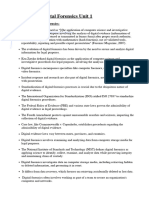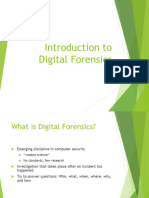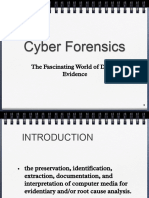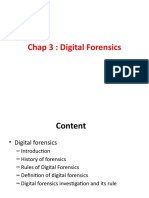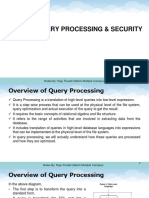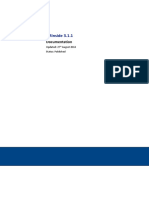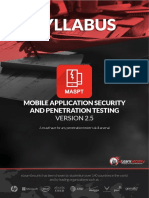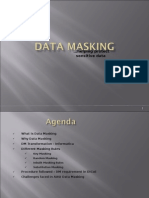0% found this document useful (0 votes)
15 views3 pagesData Storage Forensics Paraphrased
This document discusses the application of data storage concepts in digital forensics, emphasizing the importance of file systems, data recovery methods, and operating system evidence handling. It outlines various file systems, recovery techniques, and tools used in forensic investigations, while also addressing challenges and best practices in the field. Understanding data storage is crucial for forensic professionals to effectively analyze and present digital evidence.
Uploaded by
aarondeekCopyright
© © All Rights Reserved
We take content rights seriously. If you suspect this is your content, claim it here.
Available Formats
Download as DOCX, PDF, TXT or read online on Scribd
0% found this document useful (0 votes)
15 views3 pagesData Storage Forensics Paraphrased
This document discusses the application of data storage concepts in digital forensics, emphasizing the importance of file systems, data recovery methods, and operating system evidence handling. It outlines various file systems, recovery techniques, and tools used in forensic investigations, while also addressing challenges and best practices in the field. Understanding data storage is crucial for forensic professionals to effectively analyze and present digital evidence.
Uploaded by
aarondeekCopyright
© © All Rights Reserved
We take content rights seriously. If you suspect this is your content, claim it here.
Available Formats
Download as DOCX, PDF, TXT or read online on Scribd
/ 3

















